Cessna A-37 Dragonfly: Air Force Super Tweet
March 9th, 2024
6 minute read
On 18 November 1989, a Salvadoran Air Force A-37B attack aircraft was flying a combat mission in support of Salvadoran forces battling FMLN guerrillas. Two years before the fall of the Iron Curtain, the ideological conflict between communism and capitalism was still raging across Latin America. These sundry regional fights ultimately claimed thousands of lives. Weapons flowed into the area as the superpowers fought a bloody proxy war for supremacy.
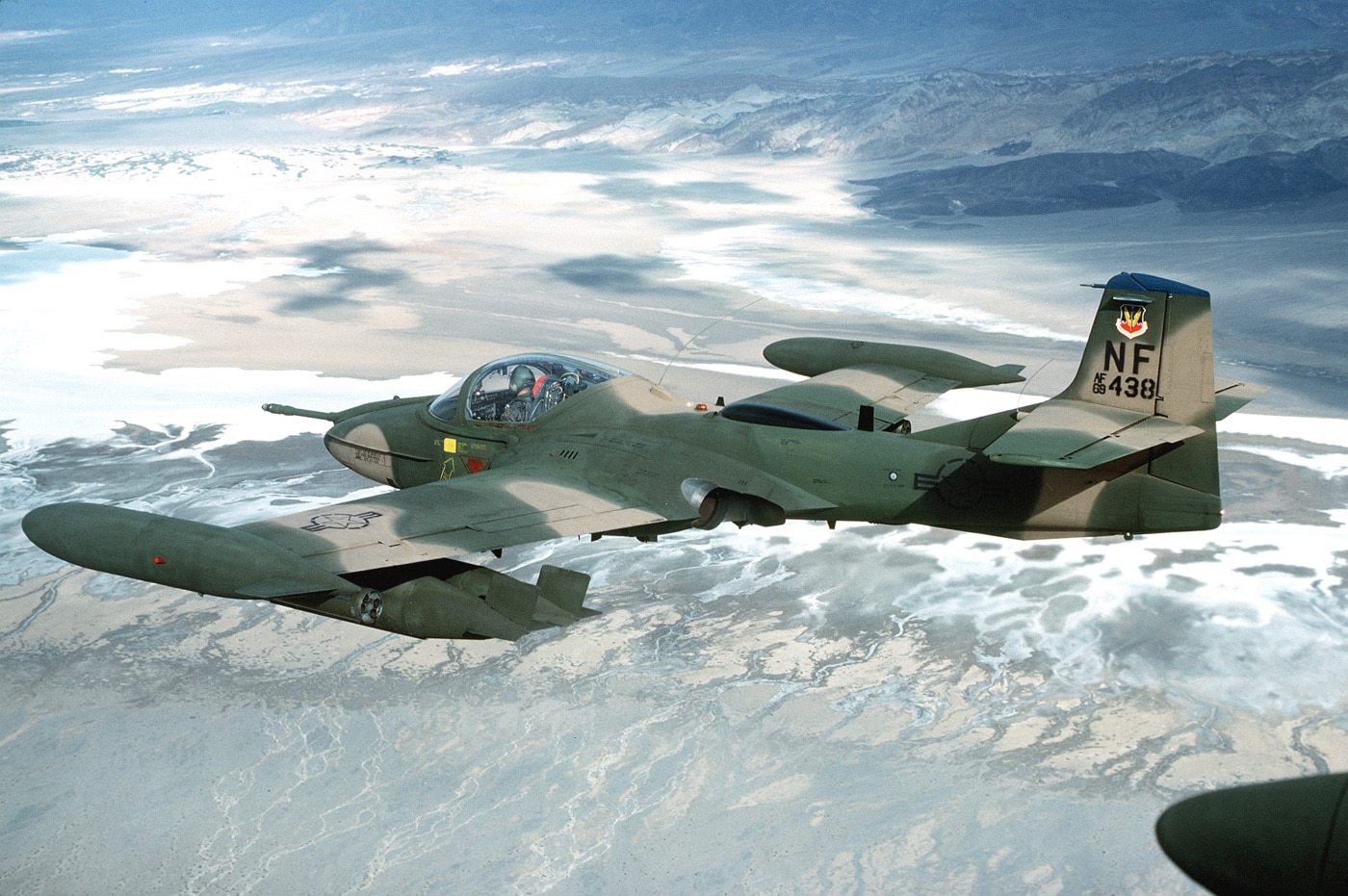
The A-37B was perfectly suited for this mission. Flying relatively slowly right over the jungle canopy, the A-37B could deliver ordnance more precisely and remain on station longer than its more expensive fast-moving brethren. On 18 November, however, things went badly for this one particular A-37 crew.
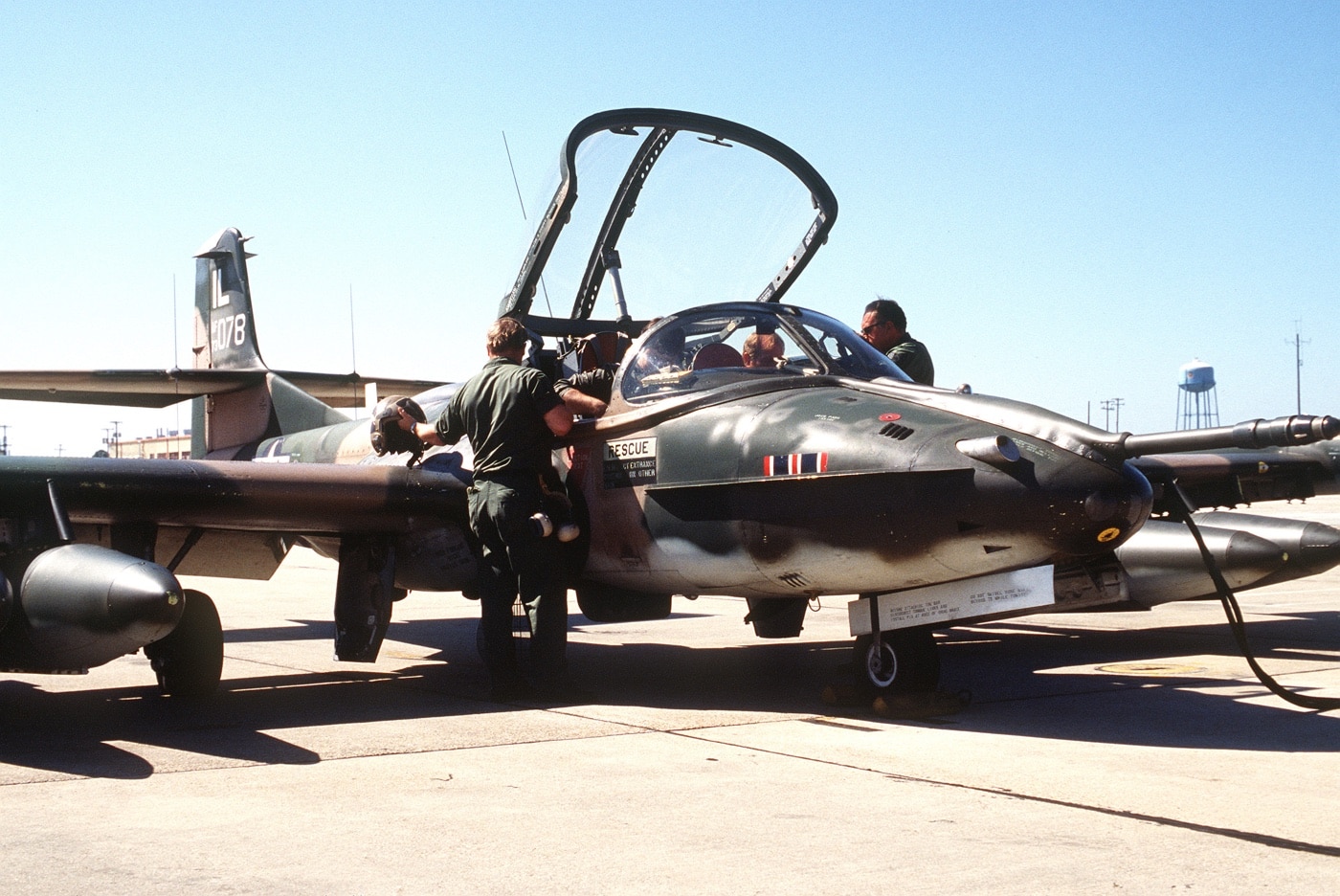
Life and death in combat are frequently driven more by luck than skill. On this particular day, an FMLN sniper crouched beside a fallen tree and oriented his long Russian SVD Dragunov rifle skyward. The man had no idea what he was doing. He had been given no formal training on leading airborne targets and knew little of ballistics. As the little Salvadoran jet shrieked overhead he took a wild guess and squeezed the trigger.
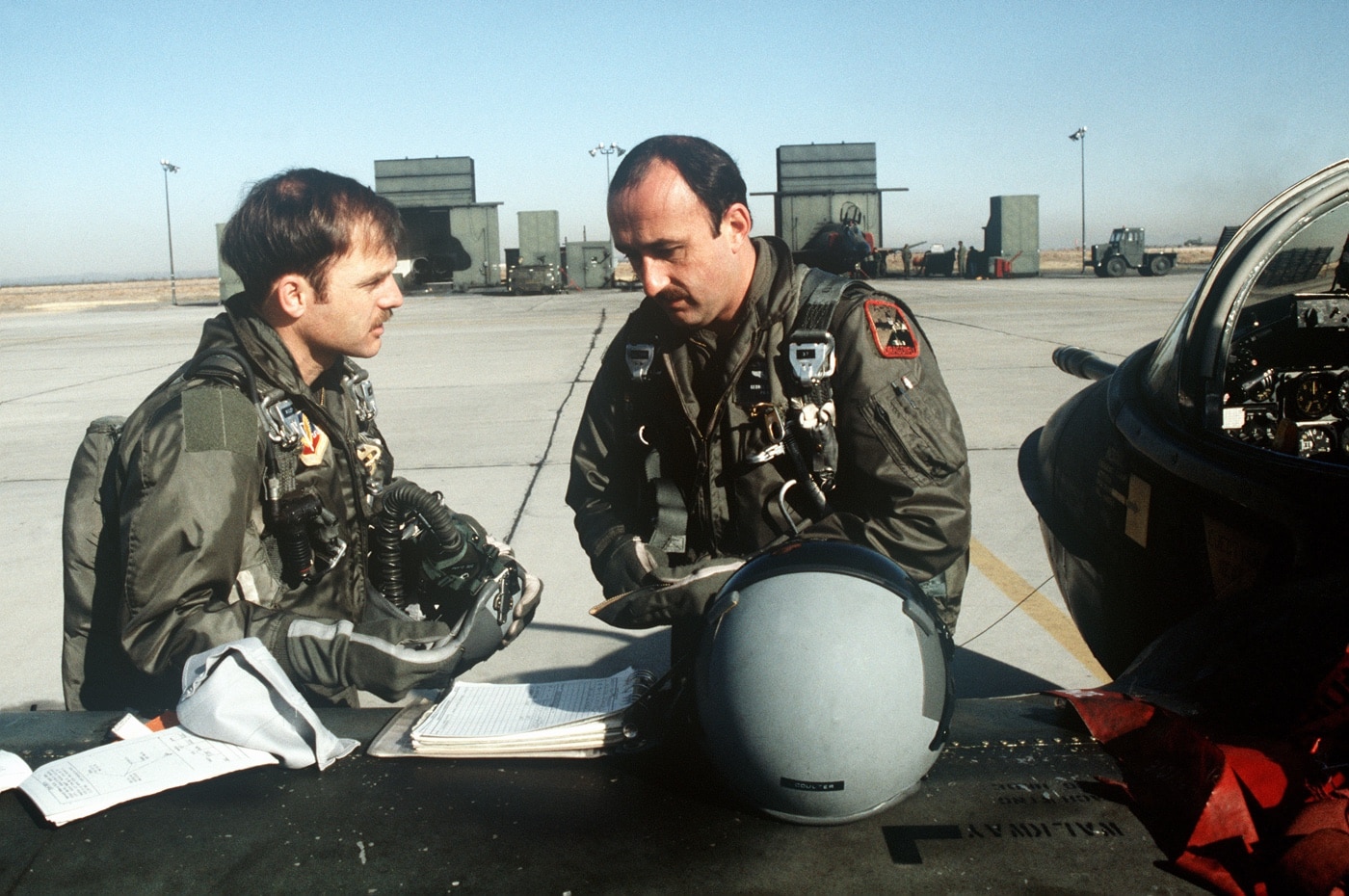
The heavy 7.62mm round just happened to punch into the cockpit of the little warplane and connect with the copilot. Within the tight confines of the compact aircraft, the end result was predictably ghastly. Now thoroughly unnerved, the A-37 pilot yanked the handles and ejected. The A-37 rolled into the jungle and exploded. In a world where hard, driven men skulking about in the dark determined the destiny of nations, this one lucky insurgent had just brought down an attack jet with a single rifle shot.
Origin Story of an Attack Cessna
The military calls it COIN. COIN is mil-speak for counter-insurgency. COIN is one of the most difficult missions in the military playbook. With the sorts of assets Uncle Sam brings to the table, seizing terrain is the easy bit. Keeping it is the tough part. The A-37 attack jet was designed specifically for COIN operations.
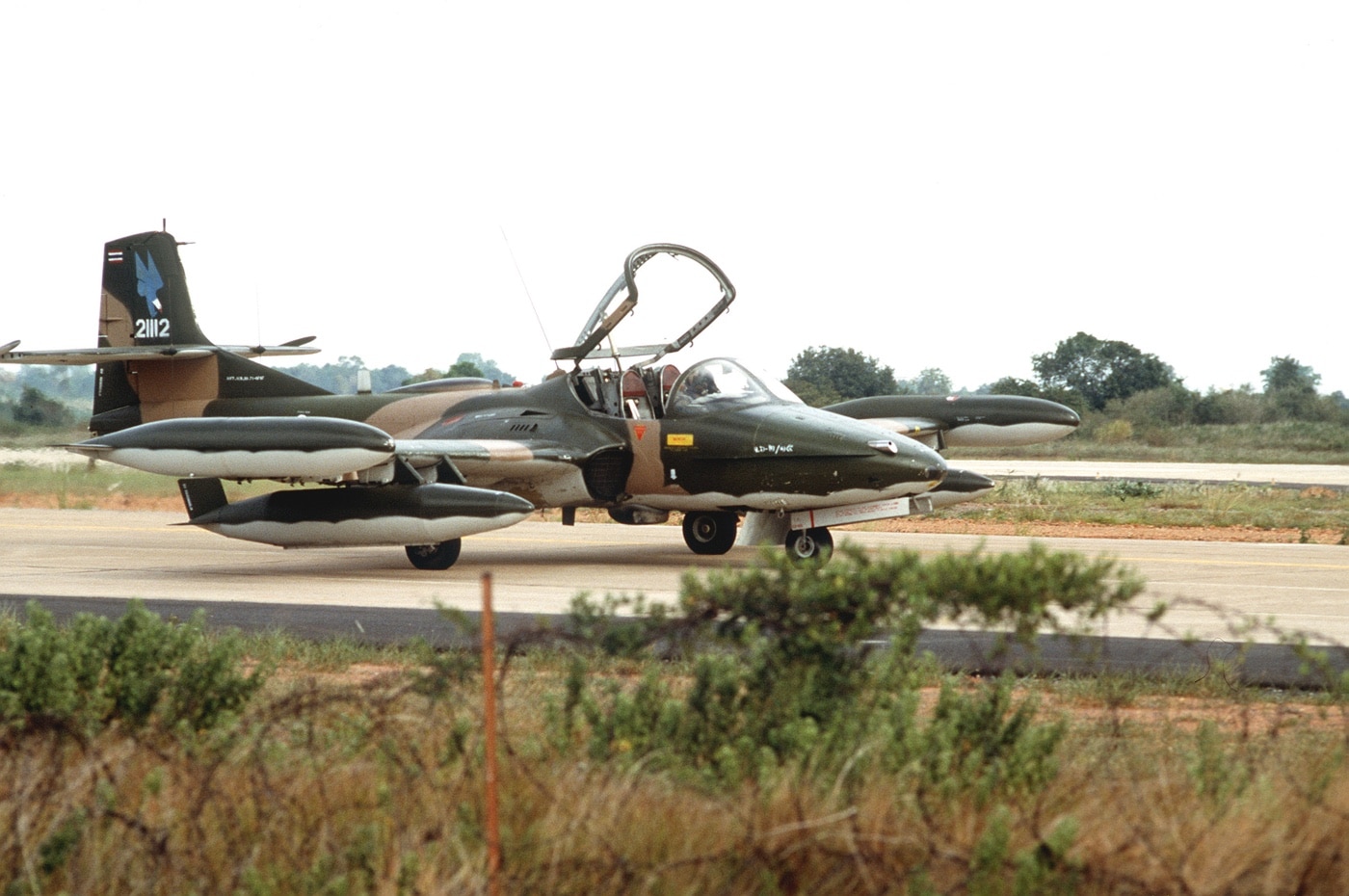
As the war in Vietnam became more intense in the early to mid-1960’s, the Air Force was burning through its stockpile of A-1 Skyraiders faster than anticipated. The WWII-vintage, propeller-driven Skyraider was a slow-moving bomb truck with an ample payload and generous loiter time. The grunts loved it as a result. However, low and slow in a hostile environment is a profoundly dangerous combination. Faced with Skyraider shortages, Air Force planners turned to the Tweet.
The Cessna T-37 Tweet was an inexpensive twin-engine primary jet trainer aircraft used by the US Air Force starting in 1957. Countless thousands of Air Force jet jockeys learned how to wiggle the sticks in this adorable little airplane. 1,269 copies were produced. The T-37 was a stable, easy-to-fly machine with a top speed of 425 mph. The Cessna seemed a good fit for the COIN mission.
Combat Dragon Transformation
The T-37 trainer was designed to carry a couple of guys and their personal gear, not bombs, guns, and rockets. To address the close air support mission, the attack version needed a lot more horsepower. By mounting improved engines, re-engineering the airframe and adding a total of eight external hardpoints, this spunky little plane was upgraded to carry substantially more chaos.
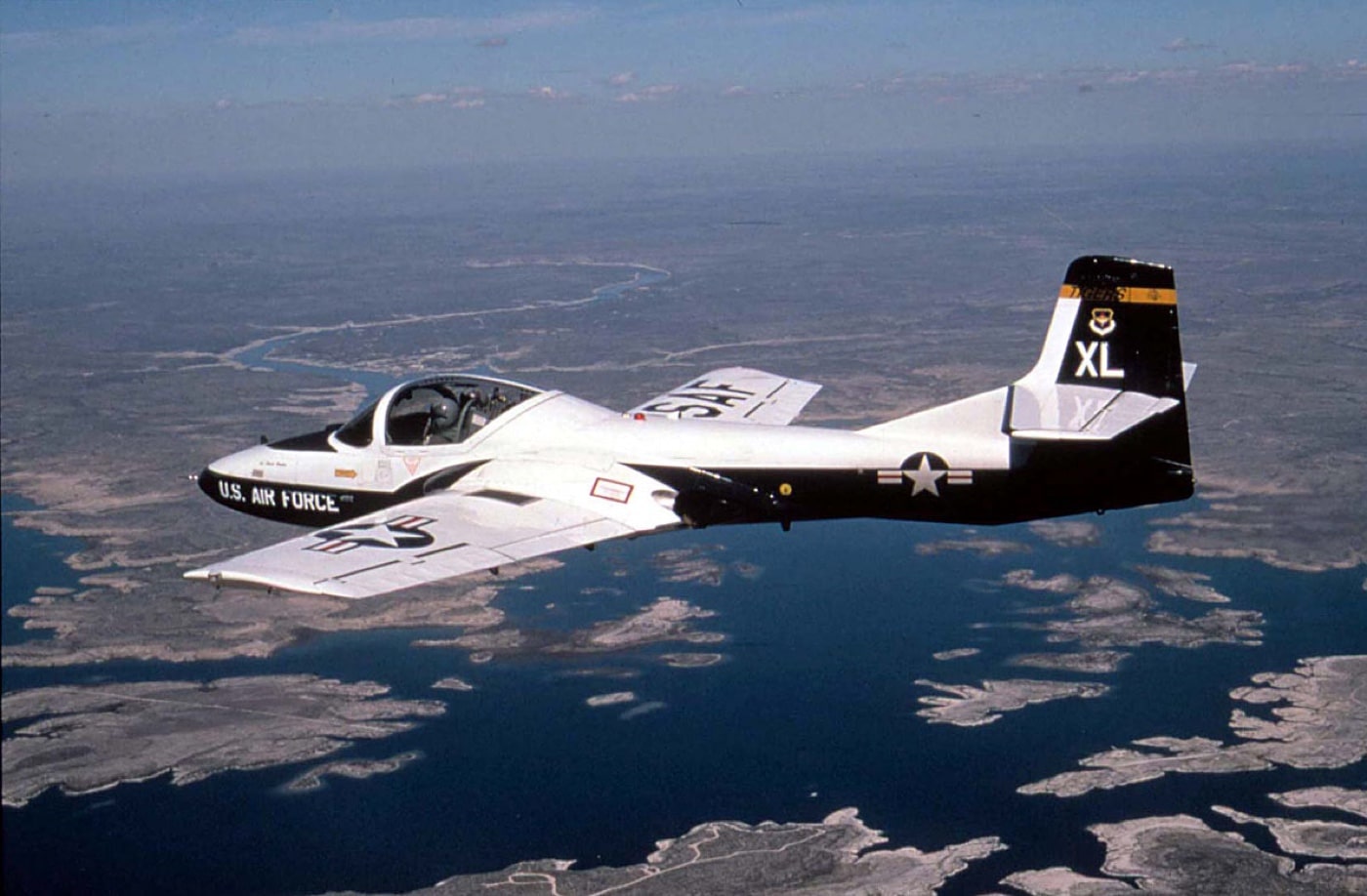
For starters, engineers first installed a General Electric GAU-2-B/A six-barrel 7.62x51mm minigun in the nose. This electrically powered Gatling gun cycled at 3,000 rounds per minute and carried 1,500 rounds onboard. That was good for an aggregate half-minute of chaos. The gun system was mounted such that it was easily accessible for maintenance and rearming. The A-37 conversion got a gunsight and gun camera as well.
The new GE J85-J2/5 turbojet engines offered fully twice the thrust of the original powerplants. The General Electric J85 is a small single-shaft turbojet engine. Military versions produce up to 2,950 lb-ft of thrust dry; afterburning variants can reach up to 5,000 lb-ft. Ruggedized landing gear allowed operations from unimproved airfields. Improved avionics and tactical communications systems enhanced interoperability, navigation and targeting.
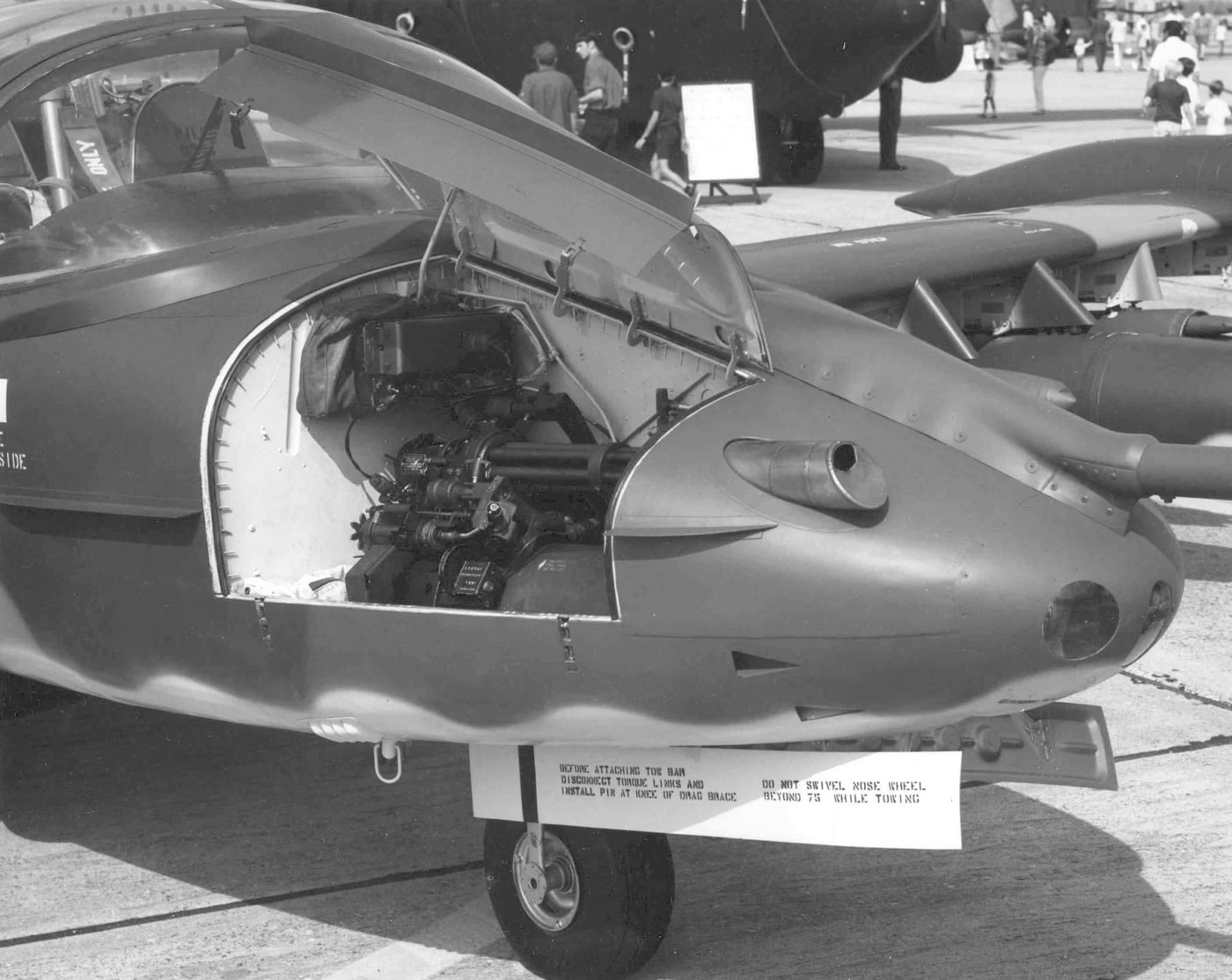
The first prototype flew in October of 1964. The first lot of production aircraft was for 39 airframes. The Air Force called the A-37 the Dragonfly. The crews who flew and maintained the plane called it the Super Tweet. In the summer of 1967, the Super Tweet went to war.
Vietnam War Combat Ops
Seating was side by side. For close support operations in Vietnam, the A-37B was typically flown single-pilot to maximize ordnance load. When operating as a FAC (Forward Air Controller) to coordinate other close support assets, an observer occupied the right seat. The plane could be flown from either seat.
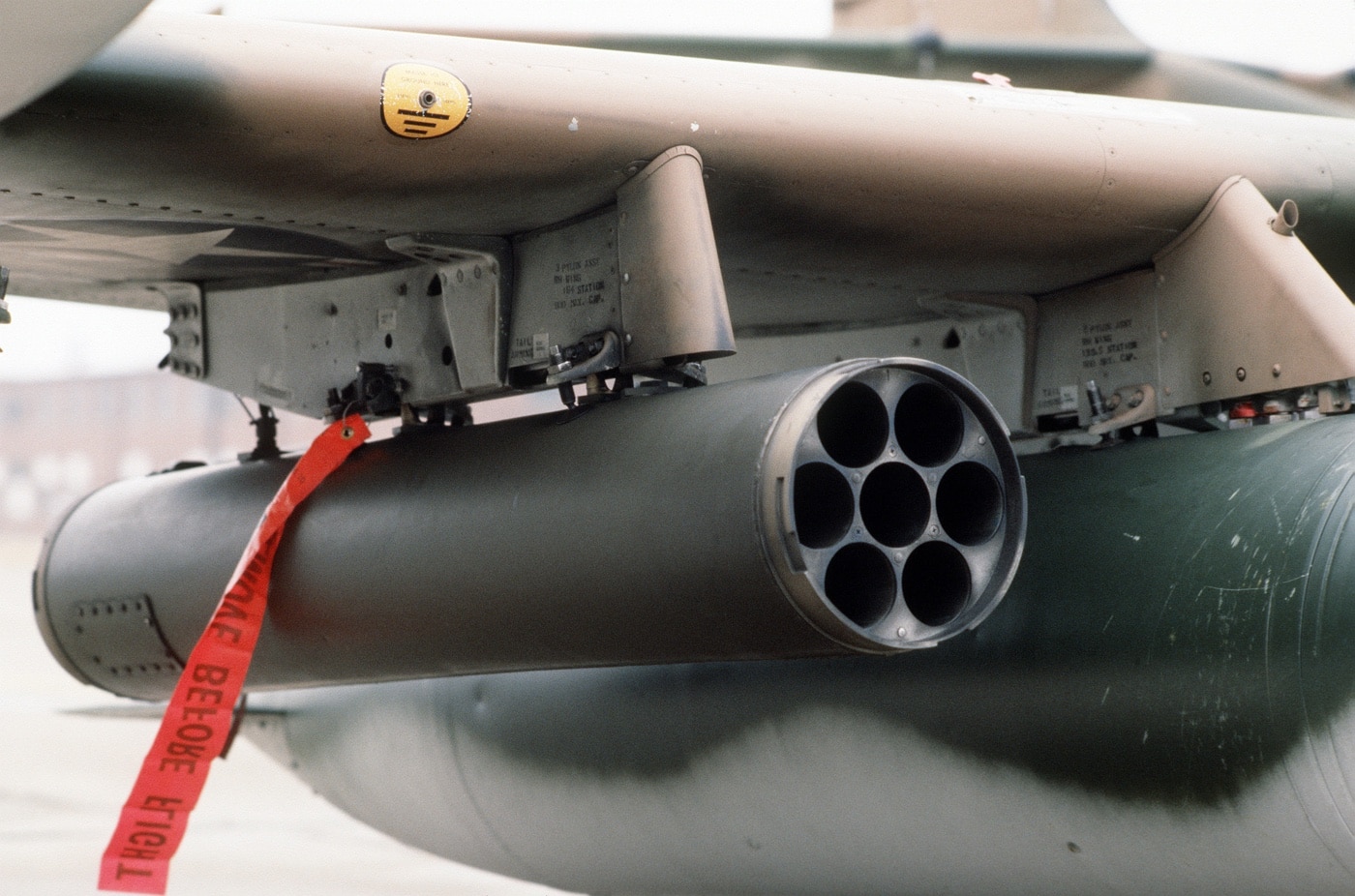
The Super Tweet turned out to be an exceptionally versatile aircraft. The rugged little plane delivered conventional gravity bombs, cluster munitions, napalm, and unguided 2.75-inch rockets. Gun pods packing additional 7.62mm miniguns as well as 20mm and 30mm cannons could be fitted to the external hardpoints, though the cannon versions were apparently never used in combat. During its first combat deployment, no A-37 aircraft were lost to enemy action, though two planes were destroyed in accidents.
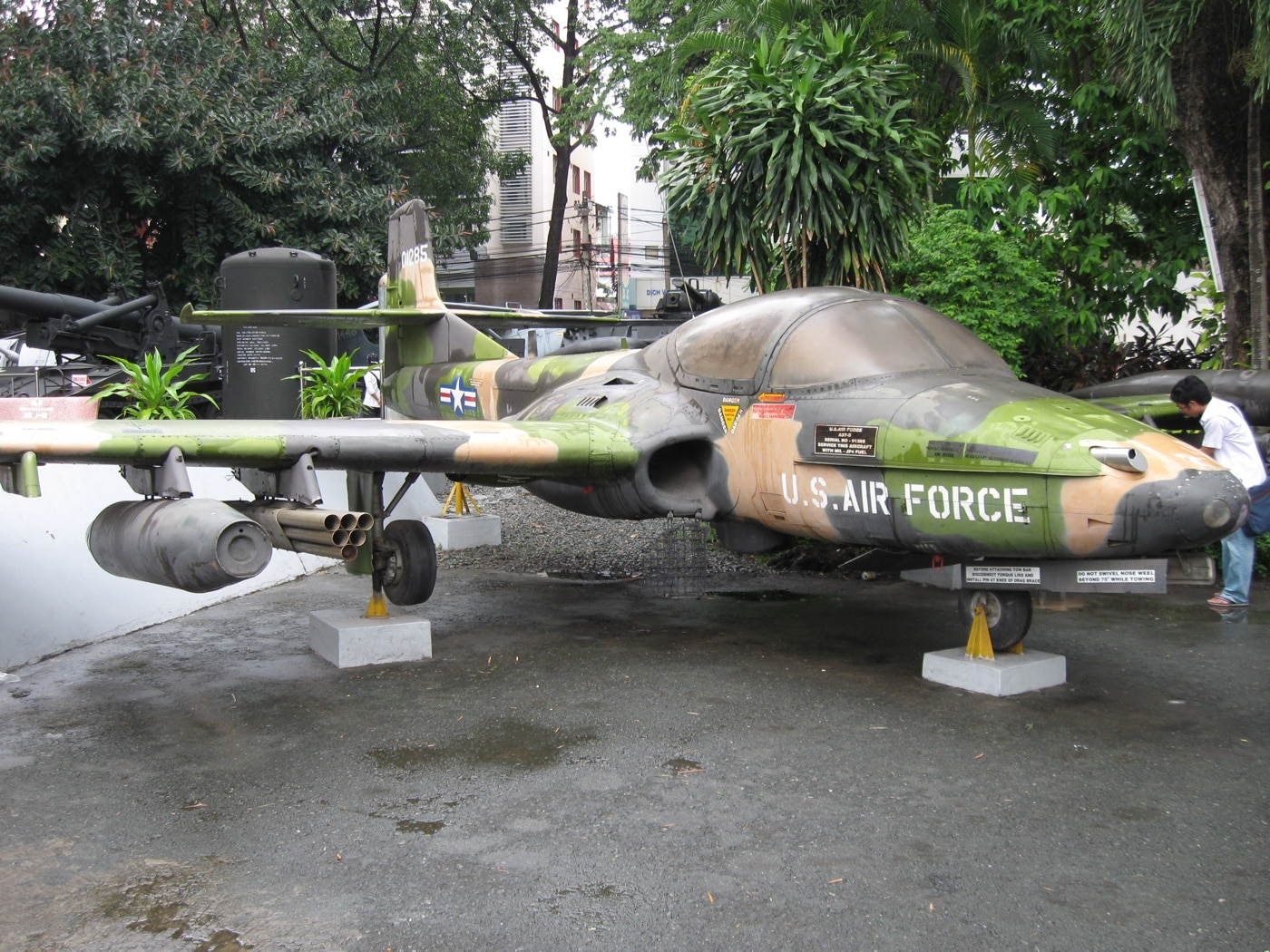
Most of the A-37 production run went to the RVNAF — the Republic of Vietnam Air Force. The South Vietnamese got good service from the machines, eventually operating 254 of the type. By the end of the Vietnam War, the A-37 had flown 160,000 combat sorties with only 22 American Super Tweets lost. However, when the North eventually overran the South, the A-37 embarked upon a new career.
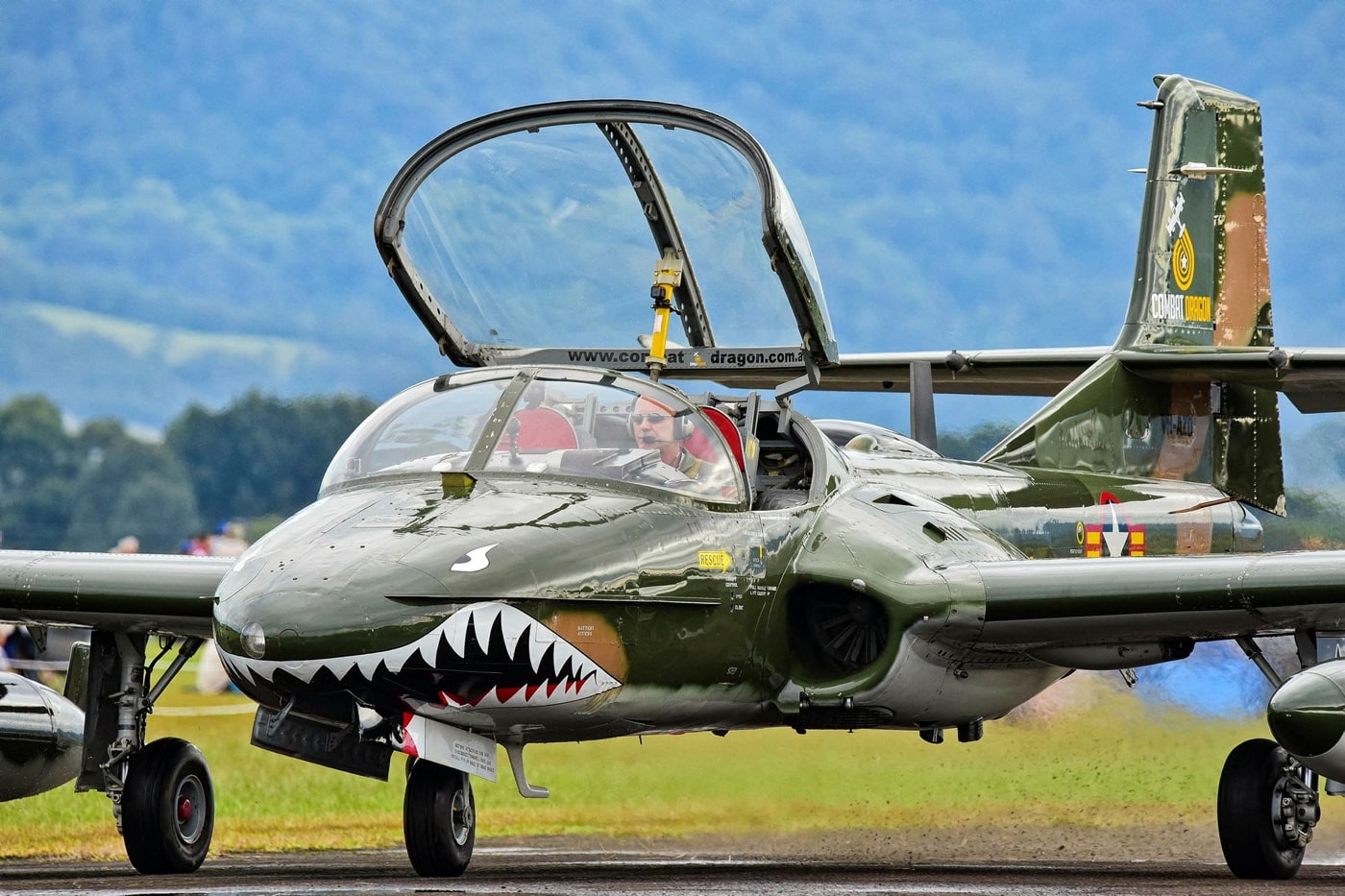
The NVA captured 33 intact A-37’s when they took Da Nang, South Vietnam. The A-37 was intentionally easy to fly. As a result, communist pilots flew these machines in combat operations against South Vietnamese forces for the rest of the conflict. These same aircraft were used by Vietnamese pilots against the Chinese during their tidy little war in 1979.
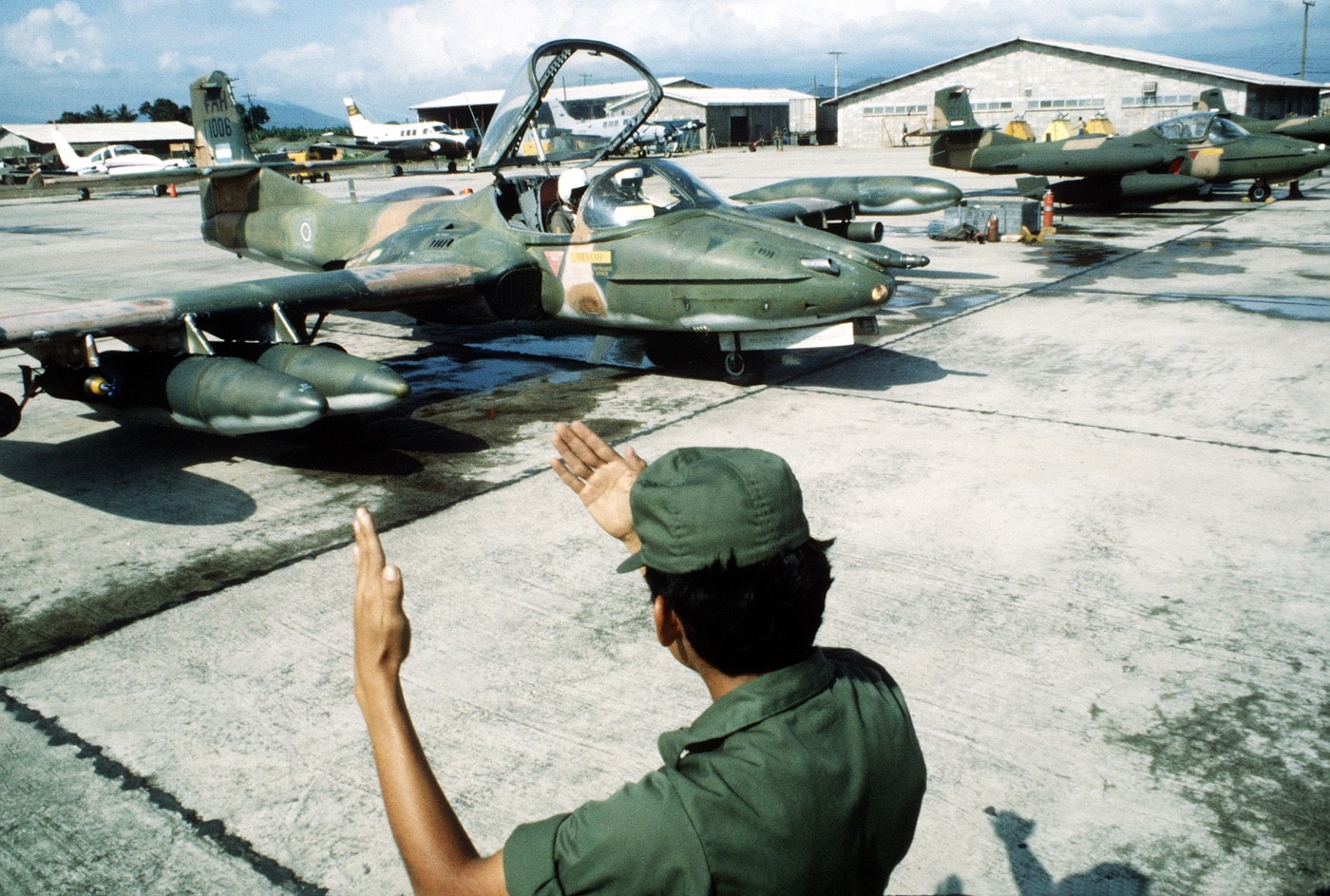
By the late 70’s, a lack of spare parts was making it difficult to operate these captured A-37’s. Vietnam subsequently exported the aircraft to a variety of communist states. The A-37 saw service in several hotspots in Latin America to include Peru, Guatemala, and El Salvador. Half a dozen copies even somehow made it onto the American civilian warbird market. Another four are privately owned in New Zealand and Australia.
Final Thoughts on the Cessna A-37
A handful of A-37 Super Tweets soldier on in Latin American military service even today. These planes are still used on COIN operations predominantly against drug cartels. More than half a century after its introduction, this adorable little bodged-together attack jet just won’t quit.
Editor’s Note: Please be sure to check out The Armory Life Forum, where you can comment about our daily articles, as well as just talk guns and gear. Click the “Go To Forum Thread” link below to jump in and discuss this article and much more!
Join the Discussion
Continue Reading
Did you enjoy this article?

 465
465






